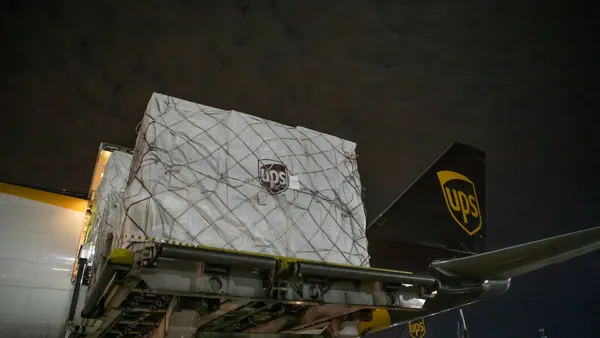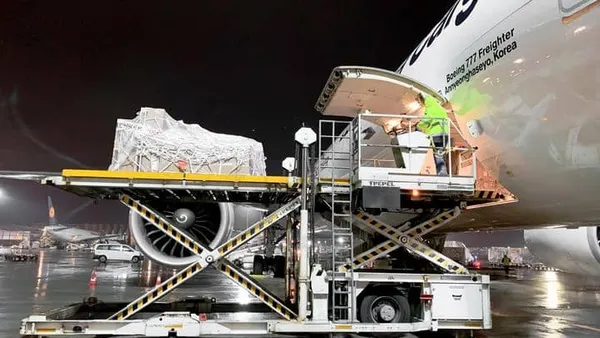Dive Brief:
- Amazon pledged to achieve carbon neutral shipments by 2030 in a blog post written by SVP of Worldwide Operations Dave Clark published Monday.
- Steps toward this new target, deemed "Shipment Zero," along with information regarding "Amazon’s company-wide carbon footprint" will be released later in the year, according to Clark. In the meantime, the company has "200 scientists, engineers, and product designers dedicated exclusively to inventing new ways to leverage our scale for the good of customers and the planet."
- "With improvements in electric vehicles, aviation biofuels, reusable packaging, and renewable energy, for the first time we can now see a path to net zero carbon delivery of shipments to customers, and we are setting an ambitious goal for ourselves," wrote Clark.
Dive Insight:
Clark laid out in the blog post what may be the biggest challenge Amazon faces on the path toward the "Shipment Zero" goal: "Customers are always going to want more selection, faster delivery speed, and lower costs."
When L'Oreal set out to minimize the carbon footprint of its supply chain, the company took a hard look at its freight split and found air freight is by far the biggest creator of carbon emissions, above road, rail and ocean transport. The natural move for L'Oreal was to find ways to minimize its use of air freight.
With L'Oreal's small percentage of direct-to-consumer sales, transitioning away from air is fathomable. But for Amazon, which redefined "fast" in terms of e-commerce fulfillment and therefore thrust the two-day mantle on every other e-tailer, air freight is essential. Plus, L'Oreal was able to add sustainable transport to its supplier selection criteria — an unrealistic tactic given Amazon's marketplace model.
Amazon has been investing heavily in beefing up its own air capacity, leasing 10 additional planes in December alone, which brings its total to 50. Wolfe Research estimates the fleet can cover roughly one quarter of the company's orders. Candace McGraw, chief executive of Cincinnati/Northern Kentucky International Airport told CNBC that Amazon is looking to schedule 200 departures and landings per day at that airport alone.
As Amazon builds out its own internal freight and logistics arsenal, it is taking more control of shipments from supplier to consumer, but the percentage of orders it handles internally is still small and Amazon Logistics capacity is still considered supplemental by the company itself, according to CFO Brian Olsavsky on the company's fourth-quarter earnings call.
Bringing more freight and logistics miles in-house will mean that Amazon has more control over the vehicles and fuel used, but it will also rely on other carriers to help meet these goals, with USPS and UPS handling the vast majority of Amazon's last mile. UPS has its own emissions reduction efforts underway, including a focus on decreasing miles traveled — which has the added benefit of leading to a more efficient network — and boosting use of alternative fuels and renewable energy.
Beth Davis-Sramek, professor in supply chain management at Auburn University’s Harbert College of Business, told Supply Chain Dive in January that the level of disclosure regarding corporate sustainably measures speaks to the seriousness of the efforts. Detail in goals, baselines and progress is key to proving impact of such efforts.
Davis-Sramek described Amazon's disclosures to date as "shallow" and "window dressing compared to other companies." Unlike 85% of Fortune 500 companies in 2017, Amazon publishes no sustainability report, according to the Governance and Accountability Institute. It is also the largest publicly traded U.S. company not to participate in the Carbon Disclosure Project, a nonprofit that surveys companies annually about carbon emissions data. Eighty-five percent of Fortune 500 companies produced a corporate sustainability report in 2017.
Amazon promised to offer more detail later this year when Clark said Amazon will share the crucial element in gauging how realistic the 50% goal is: where the company is starting. The detail of this disclosure may speak to the depth we can expect going forward.













